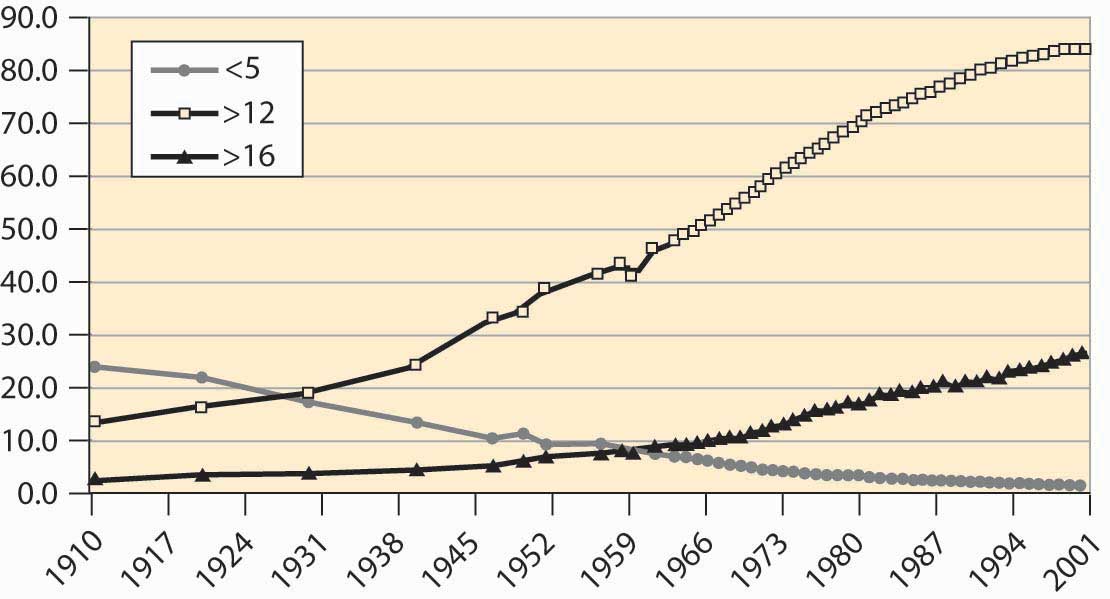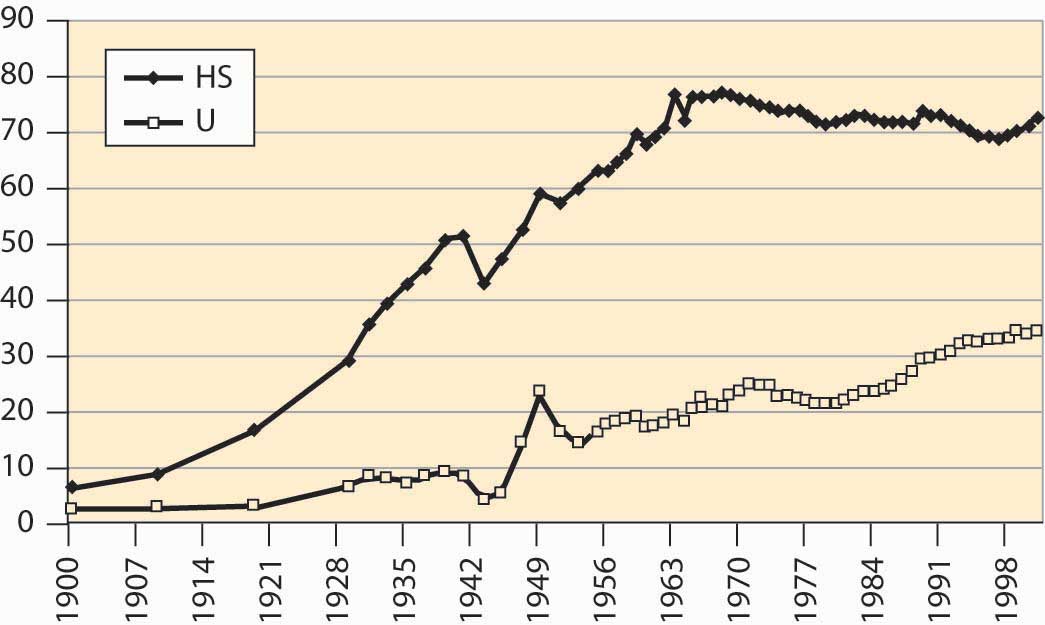Why are the Western nations rich and many other nations poor? What creates the wealth of the developed nations? Modern economic analysis attributes much of the growth of the United States and other developed nations to its educated workforce, and not to natural resources. Japan, with a relative scarcity of natural resources but a highly educated workforce, is substantially richer than Brazil, with its abundance of natural resources.
Figure 4.12 Educational attainment in years (percentage of population)

Just less than 85% of the U.S. population completes 12 years of schooling, not counting kindergarten. Not all of these students graduate from high school, but they spend 12 years in school. The proportion that completes only 5 or fewer years of elementary school has dropped from about one quarter of the population to a steady 1.6%. At least 4 years of university now represents a bit more than one quarter of the population, which is a dramatic increase, illustrated in Figure 4.12 "Educational attainment in years (percentage of population)". Slightly fewer women (25% vs. 28%)complete 4 years of university, although women are more likely to complete 4 years of high school.
Graduation rates are somewhat below the number of years completed, so that slightly less than three quarters of the U.S. population actually obtain their high school degree. Of those obtaining a high school degree, nearly half obtain a university or college degree.
Figure 4.13 Graduation rates (percentages)

There are several interesting things to see in Figure 4.13 "Graduation rates (percentages)". First, high school completion dropped significantly during World War II (1940–1945) but rebounded afterward. Second, after World War II, college graduation spiked when many U.S. soldiers were sent to university by the government under a program called the “GI Bill.”The etymology of GI, as slang for U.S. soldiers, is disputed, with candidates including “Government Issue,” “General Infantry,” and “Galvanized Iron”—the latter a reference to trash cans that looked like German World War I artillery.
As the number of high school students rose, the portion of high school graduates going to university fell, meaning that a larger segment of the population became high school educated. This increase represents the creation of the U.S. middle class; previously, high school completion and university attendance was in large part a sign of wealth. The creation of a large segment of the population who graduated from high school but didn’t attend university led to a population with substantial skills and abilities but no inherited wealth and they became the middle class.
High school completion has been declining for 30 years. This is surprising given the high rate of financial return to education in the United States. Much of the reduction in completion can be attributed to an increase in General Education Development (GED) certification, which is a program that grants diplomas (often erroneously thought to be a “General Equivalent Degree”) after successfully passing examinations in five subject areas. Unfortunately, those people who obtain GED certification are not as successful as high school graduates, even marginal graduates, and indeed the GED certification does not seem to help students succeed, in comparison with high school graduation.In performing this kind of analysis, economists are very concerned with adjusting for the type of person. Smarter people are more likely to graduate from high school, but one doesn’t automatically become smart by attending high school. Thus, care has been taken to hold constant innate abilities, measured by various measures like IQ scores and performance on tests, so that the comparison is between similar individuals, some of whom persevere to finish school, some of whom don’t. Indeed, some studies use identical twins.